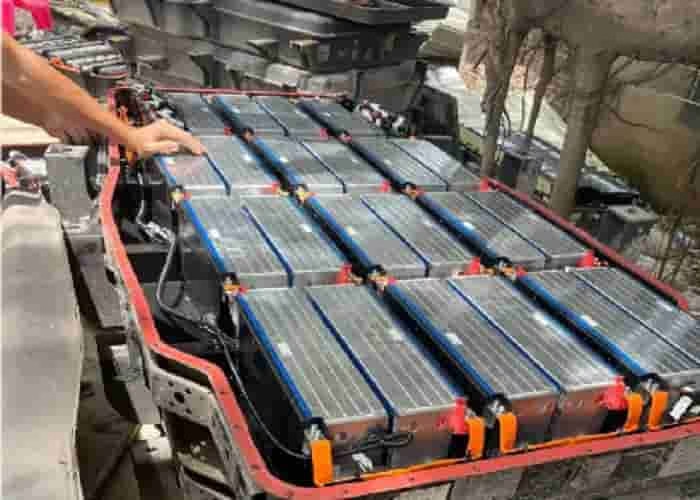When the sales data for May 2025 is frozen, the new energy vehicle market is undergoing a silent revolution. BYD sits firmly on the throne with a monthly delivery of 382,500 vehicles, Geely’s new energy sector has shocked the industry with a year-on-year growth of 135.2%, and Leapmotor has topped the list of new forces with a delivery of 45,067 units – behind these figures are the triple variations of technology iteration, policy drive and consumer awareness upgrade.
Head pattern changes: BYD’s “technical fish pond” effect
As an industry benchmark, BYD’s sales in May increased by 38.7% year-on-year, and its “oil and electricity at the same price” strategy continued to exert its strength in the Dynasty and Ocean series models. Qin PLUS DM-i’s monthly sales of 34,000 vehicles have confirmed the penetration of plug-in hybrid technology in the third and fourth-tier markets. What is more noteworthy is that the Fangchengbao brand has increased by 418.2% year-on-year, and the Denza brand has increased by 29.3% year-on-year, which shows BYD’s breakthrough ability in the high-end market. On the technical level, its fifth-generation DM-i hybrid system reduces the fuel consumption of power supply to 2.9L/100km, and with the solid-state battery technology that will soon be mass-produced, it is reshaping the market’s value perception of new energy vehicles.
Traditional giants counterattack: Geely’s “multi-brand matrix” strategy
Geely Auto’s new energy sales in May reached 138,000 units, of which the Geely Galaxy series increased by 273% year-on-year, and the Zeekr brand delivered 18,908 units. This explosive growth stems from its determination to transform to “full electrification”: Lynk & Co brand new energy models account for 63%, the Geometry series has entered the 100,000-level pure electric market, and the Zeekr 007GT exceeded 10,000 in its first month on the market. What is more interesting is its overseas layout-30,017 vehicles were exported overseas in May, a month-on-month increase of 24%. Under the pressure of EU carbon tariffs, Geely chose to build Europe’s first vehicle factory in Hungary. This “localized production + technology output” model is rewriting the globalization path of Chinese auto companies.
New Power Reshuffle: Leapmotor’s “Cost-Effectiveness Revolution”
Leapmotor topped the new power with 45,067 units delivered. Its secret lies in the decentralization of 800V high-voltage platform, laser radar and other configurations to 150,000-class models. This “technology inclusiveness” strategy directly impacts the hinterland of traditional joint venture brands. The C10 model realizes the urban NOA function at a price of 100,000 yuan, triggering the industry’s rethinking of the “intelligent driving cost boundary”. In contrast, Xiaopeng Motors, whose MONA M03 entered the market with a starting price of 119,800 yuan, received more than 10,000 orders in a single month, proving the effectiveness of the “high-level intelligent driving equal rights” strategy. Ideal Auto, on the other hand, has a stable monthly sales of 2,500-3,000 units through the MEGA model, opening up a new track in the pure electric MPV market.
Policy Dongfeng: Trade-in creates an incremental market
In May, the number of applications for automobile trade-in subsidies reached 1.23 million, accounting for 70% of private car retail sales. This policy dividend is particularly evident in brands such as Geely and Leapmotor: among Geely’s new energy sales, replacement users account for more than 55%; the proportion of Leapmotor C11 increased replacement purchases reached 62%. It is worth noting that policy orientation is changing the market structure – plug-in hybrid models accounted for 42% of sales in May, surpassing the growth rate of pure electric models for the first time, reflecting consumers’ real demand for “no range anxiety” technology. Technology secret war: arms race from batteries to chips
In the invisible battlefield, the technology game is becoming more and more intense. BYD announced that it will mass-produce solid-state batteries by the end of 2025, with an energy density exceeding 450Wh/kg; Geely’s Core Engine Technology released the 7nm automotive-grade chip “Longying No. 1”, with a computing power of 256TOPS. These breakthroughs directly impact the industry structure: BYD Han EV equipped with solid-state batteries has a range of more than 1,000km, and Zeekr 007GT has achieved nationwide coverage of urban NOA functions with its self-developed chips. What is more noteworthy is that the group standard “Method for Determining All-Solid-State Batteries” issued by the Ministry of Industry and Information Technology sets technical thresholds for the industry and accelerates the elimination of low-end production capacity.
Consumer awakening: from “price sensitivity” to “value sensitivity”
Market research shows that in May, the weight of intelligent configuration exceeded the range for the first time in the decision-making factors for purchasing new energy vehicles. Xiaopeng P7+ achieved a 37% replacement rate in the 250,000-level market due to its AI driving function; Weilai ES6 has increased the repurchase rate of old car owners to 28% through the Banyan 3.0 system upgrade. This transformation is more obvious after the improvement of charging infrastructure-65,000 new public charging piles were added nationwide in May, and the car-pile ratio dropped to 2.5:1. Range anxiety is no longer the primary obstacle to car purchases.
Future vision: The life and death line of monthly sales of 100,000 vehicles
When Ideal Auto locked its monthly sales target at 50,000 vehicles and Xiaomi Auto was busy with the mass production of YU7, the market has entered a cruel “elimination” stage. According to data from the China Association of Automobile Manufacturers, there were 27 brands with cumulative sales of less than 10,000 vehicles in the first five months, an increase of 40% over the same period in 2024. In this marathon, companies that can survive must possess three characteristics at the same time: the ability to independently develop core technologies, the ability to define differentiated products, and the ability to integrate global resources. When the new energy penetration rate exceeded 52.9% in May, a new era of electric smart cars has begun.
















Leave a Reply